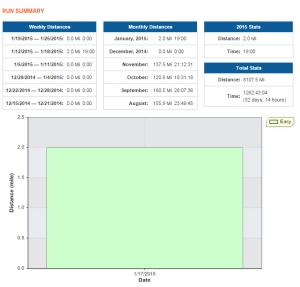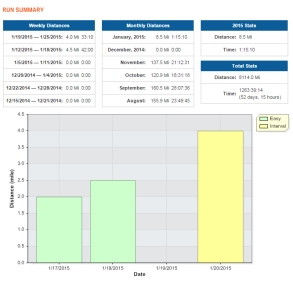Beyond the Pounding Model
If I can take any comfort in this injury, it’s that there are concrete steps I can take to support the healing process. Unlike a lot of the tweaky soft tissue injuries I’ve had in the past, this is a clear diagnosis with a clear progression of recovery. I take some satisfaction in knowing what processes should be occurring when, and how I can possibly help them along.
As soon as I began to suspect that I had a stress fracture, I started researching the condition, its causes, and the healing process. It’s actually quite interesting, and not as simple as the repeated pounding model that most of us imagine it to be. Stress fractures are certainly correlated with repetitive stress, however, studies have shown that the mechanism is far more complex. Repetitive loading causes a slight distortion in the bone, which in turn leads to decreased blood flow and oxygen to the area, particularly during long workouts. Muscle fatigue can magnify these effects as the soft tissues become less able to resist the stresses applied.
The lack of oxygen seems to then trigger the bone’s rebuilding cycle to begin. The normal cycle of tissue breakdown and rebuilding ultimately results in stronger bones, however the early stages of the process actually significantly weaken the structure. As microscopic damage occurs, osteoclast cells are sent to the area to absorb the compromised bone. In fact, osteoclasts actually cut tunnels within the existing bone structure along the lines of stress. (How cool is that?) Once the damaged tissue is cleared away, osteoblast cells come in and begin to deposit new bone within the matrix. It takes 10-20 days for the newly placed bone to mature, however, and it is during this time that the injured area is most vulnerable. If the cycle progresses normally, in about three weeks the bone is stronger and effectively reinforced along the direction of stress. If too much stress is placed on the bone during the remodeling process, however, the repair process will be interrupted, and/or damage will outpace the body’s ability to repair it. The microscopic fissures begin to merge, and a crack forms in the bone.
At this point, the injury becomes painful and activity must be reduced. As the bone begins to heal, a soft bone callus forms around the injured area. While the initial fracture is often not visible on x-rays, the bone callus will appear as a ghosted area. After about a month, the callus will begin to harden and the injury is markedly less painful. The bone is still not at full strength, however, and returning to full activity at this point can result in a recurrence of the fracture. The callus can also put pressure on adjacent bones and tissues causing a change in gait and/or pain and numbness in the area. After 8 weeks, if all goes well, the bone should be returning to full strength and normal activities can be slowly resumed.
Nutrition for Healing
For the stress fracture to heal, further stress on the bone must be limited. And while the time frame needed for the new bone to mature cannot effectively be accelerated, the rebuilding process can be supported by supplying the required minerals and nutrients, along with plenty of rest. It’s worth noting here that NSAIDs block one of the inflammatory markers that stimulate osteoblasts, and taking them will slow the healing process. Curcumin and ginger reduce inflammation without disrupting the development of new bone, however. Studies have also shown that supplementing with additional vitamins and minerals can aid healing and reduce complications:
Vitamin C & E – anti-oxidant properties help counteract the release of free radicals that occurs during a fracture
Vitamin D – aids in the absorption of calcium
Magnesium – also needed for calcium absorption, and often deficient in runners as it can be lost through sweat
Calcium – bone is nearly 70% calcium phosphate, so adequate supplies are critical to fracture healing
In addition to the supplements above, I’ve also been adding a tablespoon of gelatin to my coffee every morning. There’s a batch of bone broth going in the crock pot, and I’m keeping my protein intake a bit higher than I normally would when I’m not running as well. (Despite runners’ tendency to not want to gain weight while they are sidelined, this is NOT the time to restrict calories.) Getting adequate rest and sleep is, of course, critically important, and that is made slightly easier by the fact that I’m not running at 6 AM every morning.
It’s hard sitting still with my foot up, it’s hard to resist the urge to put the regular pedals back on my bike and work up a good sweat, and it’s really hard to not run. I’m getting in some good strength training and am starting to see results in the pool as well. There is certainly a silver lining to be appreciated, but no matter what, getting injured sucks. I’m trying to remind myself that after a year of hard training I really do need some rest. My foot may be the most acute issue, but I will certainly benefit from a little down time and switching up the routine. I’m probably not losing as much fitness as I imagine, and even if I am, I’ll get it back. I did it once already, and it’s easier to regain fitness than to build it up from scratch. If all else fails, I’m thinking of developing a bone broth-based cocktail.
~ModC


